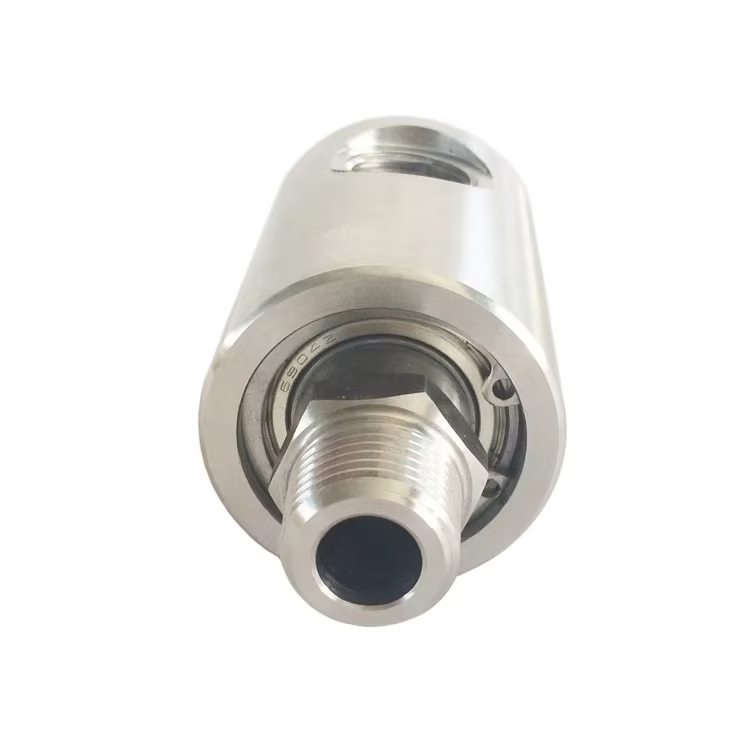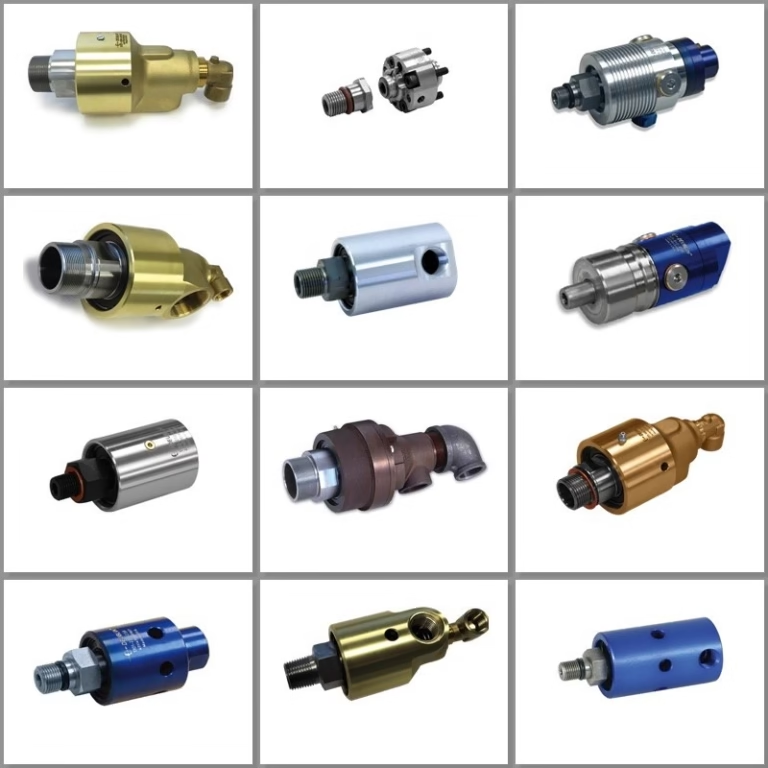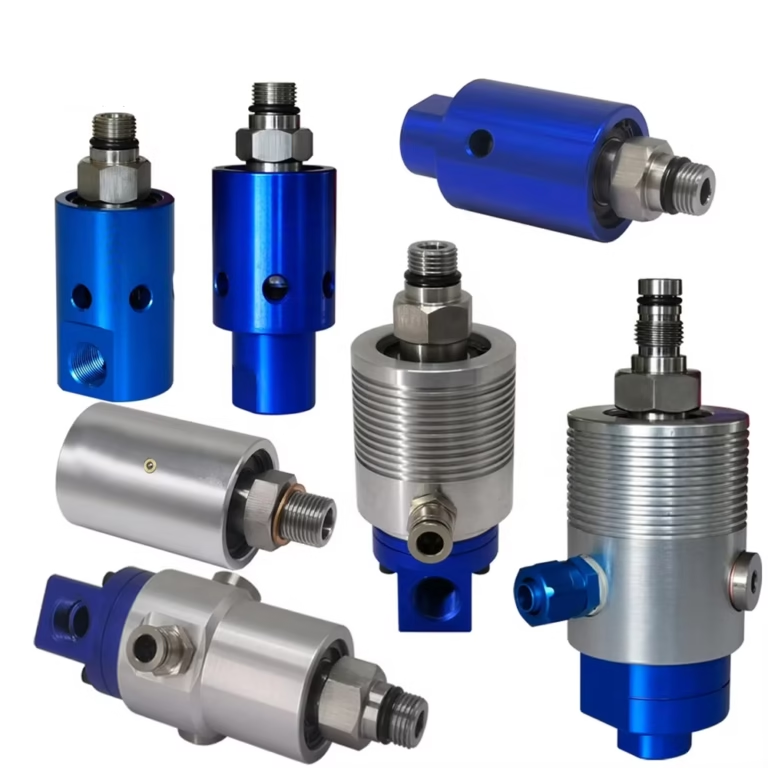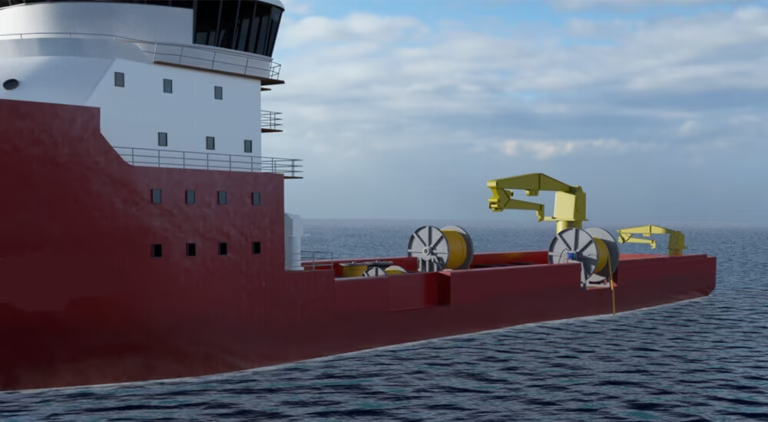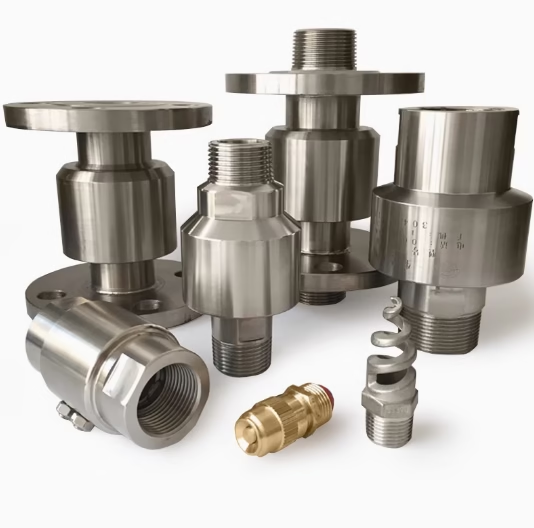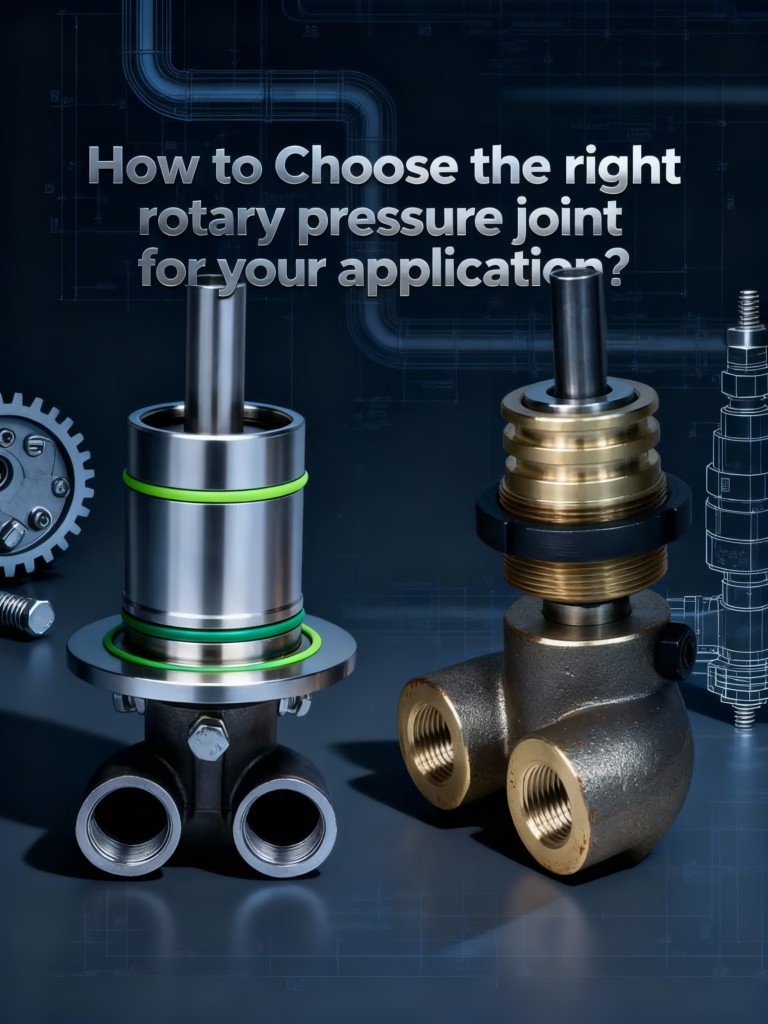The Ultimate Guide to Rotary Unions for Air Systems
The Ultimate Guide to Rotary Unions for Air Systems: Design, Applications
Introduction
In the realm of industrial machinery and automation, rotary unions are unsung heroes that enable seamless power and fluid transfer between stationary and rotating components. When it comes to pneumatic systems, rotary unions for air play a critical role in maintaining efficient airflow, ensuring machinery operates at peak performance. This comprehensive guide will delve into the technical specifications, applications, selection criteria, maintenance tips, and market trends of air rotary unions.
1. Understanding Rotary Unions for Air: Technical Specifications
A rotary union for air, also known as a pneumatic swivel joint, is a mechanical device design to transfer compressed air from a stationary source, such as an air compressor or main air supply line, to a rotating component within a machine. It acts as a connection point that allows the continuous flow of air while accommodating the rotational movement of the equipment.
Core Components
Stationary Housing:
This forms the outer shell of the rotary union and connects to the fixed air supply. It contains the inlet port through which air enters the union.
Rotating Shaft:
The shaft is the part that rotates along with the moving component of the machinery. It has an internal passageway for the air to flow through and exits at the appropriate location on the rotating side.
Seals:
Seals are critical elements in an air rotary union. They are responsible for preventing air leakage between the stationary and rotating parts. Common seal materials include rubber (such as nitrile rubber for general applications), fluorocarbon rubber (for higher temperature and chemical resistance), and, in some high-performance applications, mechanical seals made of materials like carbon graphite and tungsten carbide.
Bearings:
Bearings support the rotational movement of the shaft. They reduce friction and ensure smooth operation. Different types of bearings depending on the application requirements, such as ball bearings for applications with relatively light loads and high speeds, and roller bearings for heavier loads.
Working Principle
The operation of an air rotary union is based on a simple yet ingenious concept. Compressed air enters the stationary housing through the inlet port. As the shaft rotates, the air is directly through the internal passageways within the shaft and then delivery to the rotating component.
The seals maintain a tight seal between the stationary housing and the rotating shaft, preventing any air leakage. This allows for a continuous and reliable supply of compressed air to power the rotating parts of the machinery, whether it’s a pneumatic motor, a tool attached to a robotic arm, or a rotating drum in a manufacturing process.
Types of Air Rotary Unions
Single-Passage Rotary Unions
Design and Function
Single-passage air rotary unions are the simplest form of these devices. They are transferring a single stream of compressed air from the stationary to the rotating part. These unions have a single inlet and a single air outlet. The design is straightforward, with the air entering through the stationary housing and exiting through the rotating shaft.
They are commonly in applications where only one source of compressed air for power a rotating component. For example, in a basic pneumatic drill attach to a rotating spindle, a single-passage air rotary union can supply the necessary air pressure to drive the drill bit.
Applications
Automotive Assembly:
In automotive manufacturing plants, single – passage air rotary unions are used to power pneumatic tools like impact wrenches that are attached to robotic arms. The air is transferred through the union to the tool, allowing it to perform tasks such as tightening bolts on car frames during assembly.
Textile Machinery:
In textile mills, single-passage air rotary unions use in spinning machines. Compressed air is used to control the movement of certain components, and the single-passage union ensures a steady supply of air to these rotating parts.
Multi-Passage Rotary Unions
Design and Function
Multi-passage air rotary unions are more complex in design compared to their single-passage counterparts. They transfer multiple media, which can include different types of gases or even a combination of air and other fluids (in some cases where the union is designed for multi-media transfer). These unions have multiple inlet and outlet ports, each dedicated to a specific medium.
Inside the union, the passages for each medium are carefully separated to prevent cross-contamination. Specialized seals and internal structures are used to ensure that each medium flows through its designated path without mixing with others.
Applications
Packaging Machinery:
In high-speed packaging lines, multi-passage air rotary unions are used to transfer both compressed air for actuating various mechanical parts and vacuum for tasks like picking and placing product containers. For example, in a bottling plant, the union can supply air to operate the capping mechanism while also providing a vacuum to lift and position the bottles accurately.
Medical Equipment:
In some medical devices, such as certain types of surgical robots, multi – passage air rotary unions are essential. They can transfer different gases, like compressed air for powering the robot’s joints and a specific medical gas for patient treatment, simultaneously. This requires a high level of precision and reliability to ensure the proper functioning of the equipment and patient safety.
High-Speed Rotary Unions
Design and Function
High-speed air rotary unions are specifically designed to operate at extremely high rotational speeds. These unions need to withstand the centrifugal forces and high-speed friction generated during operation. To achieve this, they are constructed with high-quality materials and advanced engineering techniques.
The seals in high – speed unions are often made of materials with low friction coefficients and excellent wear resistance, such as carbon – graphite composites. The bearings are also carefully selected to support the high – speed rotation, with options like high – precision ball bearings or magnetic bearings in some advanced designs. The internal passages are optimized for smooth airflow to minimize pressure drops at high speeds.
Applications
CNC Machining Centers:
In CNC (Computer Numerical Control) machines, high-speed spindles are used for precision cutting operations. High-speed air rotary unions are employed to supply compressed air to the spindle for functions like tool cooling and air-assisted cutting. These unions can handle rotational speeds of up to tens of thousands of revolutions per minute, ensuring efficient and accurate machining processes.
Aerospace Manufacturing:
In the aerospace industry, during the manufacturing of turbine engines, high-speed air rotary unions in testing and production of components. They transfer air to rotating parts of test rigs at high speeds, simulating the operating conditions of the engines. This helps in evaluating the performance and integrity of the engine components under realistic scenarios.
High-Pressure Rotary Unions
Design and Function
High – pressure air rotary unions are built to handle elevated air pressures, often in the range of several hundred pounds per square inch (psi) or even higher. The design of these unions focuses on ensuring structural integrity and leak – tightness under high – pressure conditions.
The housing and shaft of high-pressure unions are made of strong materials, such as high-grade steel or alloy materials. The seals withstand high-pressure differentials and are often multi-layered or made of special materials with high compressive strength. Reinforce internal structures incorporate to prevent deformation under pressure.
Applications
Oil and Gas Industry:
In oil refineries and gas processing plants, high-pressure air rotary unions in various applications. For example, in pneumatic control systems for valves and actuators in high-pressure pipelines, these unions transfer air at high pressures to operate the equipment. They are also in some drilling operations, where compressed air with functions like clearing drill cuttings from the wellbore.
Power Generation:
In power plants, especially in steam turbine – based power generation, high – pressure air rotary unions can in systems that use compressed air for turbine blade cleaning or for controlling certain auxiliary equipment. The ability to handle high pressures is crucial to ensure the efficient and reliable operation of the power generation process.
2. Applications of Air Rotary Unions Across Industries
The versatility of air rotary unions makes them indispensable across various sectors. Here are some key applications:
Automation and Robotics:
In robotic arms and rotating tables, air rotary unions ensure uninterrupted airflow for pneumatic actuators, grippers, and sensors.
Tire Inflation Systems:
Used in automatic tire inflation systems for vehicles, ensuring tires maintain optimal pressure during operation.
Medical Equipment:
In surgical tables, CT scanners, and other rotating medical devices, they facilitate the transfer of cooling air or medical gases.
Aerospace:
Critical in rotating radar systems, helicopter rotor blades, and aircraft landing gear for hydraulic and pneumatic power transfer.
Industrial Manufacturing:
Employed in rotating kilns, mixers, and packaging machinery for pneumatic control systems.
3. How to Select the Right Rotary Union for Air Systems
Choosing the appropriate rotary union involves careful consideration of several factors:
Media Compatibility:
Ensure the union for compressed air and any additives or contaminants present in the air stream.
Pressure and Temperature:
Match the union’s specifications to the system’s maximum operating pressure and temperature.
Speed and Direction:
Confirm the union can handle the rotational speed and direction of your application.
Number of Passages:
Select a configuration that meets the airflow requirements without unnecessary complexity.
Integration with Slip Rings:
If electrical signals or power need for alongside airflow, choose a union integrated with a slip ring.
4. Maintenance and Troubleshooting Tips
Proper maintenance is crucial to prolonging the lifespan of your air rotary union:
Regular Inspections:
Check for leaks, wear, and contamination regularly. Replace seals and bearings as needed.
Air Quality Control:
Use clean, dry compressed air and install high-efficiency filters (5 μm or finer) to prevent debris ingress.
Lubrication:
Follow the manufacturer’s guidelines for lubrication intervals and types.
Functional Testing:
Conduct periodic leak tests and performance evaluations under load.
Storage:
If storing the union, ensure it is clean, dry, and protected from physical damage.
5. Market Trends and Future Innovations
The global rotary union market will grow at a CAGR of 5% by 2030, driven by:
Industrial Automation:
The rise of Industry 4.0 and smart factories increases demand for reliable pneumatic and hydraulic systems.
Emerging Markets:
Growth in APAC regions is due to infrastructure development and manufacturing expansion.
Technological Advancements:
Innovations in materials science and IoT integration are leading to smarter, more durable unions.
7. Industry Standards and Compliance
Adherence to standards ensures safety and performance:
ISO Standards:
Compliance with ISO 1219, ISO 5380, and other relevant standards for fluid power systems.
ATEX Certification:
For use in explosive atmospheres, ensure unions meet ATEX directives.
Manufacturer Guidelines:
Follow the manufacturer’s installation, operation, and maintenance procedures.
8. Case Studies and Real-World Applications
Case Study 1: Automated Tire Inflation System
Challenge: Maintaining consistent tire pressure in heavy-duty vehicles.
Solution: Implementation of a multi-passage air rotary union with integrated pressure sensors.
Results: Reduced tire wear, improved fuel efficiency, and enhanced safety.
Case Study 2: Robotic Welding Arm
Challenge: Ensuring continuous airflow to pneumatic tools during high-speed rotation.
Solution: High-speed rotary union with dual passages for air and cooling fluid.
Results: Increased welding precision and reduced downtime.
9. Frequently Asked Questions (FAQ)
Q: What is the difference between a rotary union and a slip ring?
A: A rotary union transfers fluids, while a slip ring transmits electrical signals or power. Some unions integrate both functions.
Q: Can I use a hydraulic rotary union for air applications?
A: Not recommended. Hydraulic unions are for liquids and may not seal properly with compressed air.
Q: How often should I replace the seals in my air rotary union?
A: Typically every 1-2 years, depending on usage and operating conditions. Refer to the manufacturer’s guidelines.
10. Conclusion
Air rotary unions are indispensable components in modern pneumatic systems, enabling efficient power transfer in rotating machinery. By understanding their technical specifications, applications, and maintenance requirements, engineers and procurement professionals can make informed decisions.
Call to Action
For more information on selecting the right rotary union for your application or to explore our range of high-quality pneumatic components, contact our team of experts today. Stay tuned for our upcoming guides on hydraulic rotary unions and slip ring technology!


